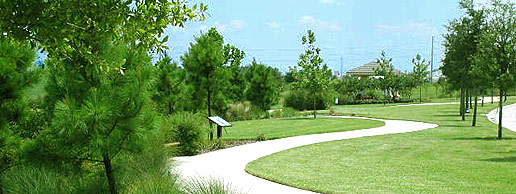
Solutions Roundtable
(contact Mark Hostetler hostetm@ufl.edu)
The purpose of this Web site is to gather solutions that have been tried and were somewhat successful in solving a natural resource issue. The idea is to make various solutions known to other areas of the state and to identify which people are knowledgeable about the solution and could help other cities/counties to implement.
We are at the gathering phase of this project and I am asking people to fill in solutions and key people involved. Eventually we will pilot a team of folks to help out with implementing the proposed solution in another locality.
The solution may be something that is replicated in a relatively short period of time (e.g., educational signs for neighborhoods that help spread best management practices throughout a neighborhood) or the solution may be a process that is started but takes time to mature (e.g., consultation with a developer to create a green development).
Please propose the solution in the exact format (keep it short!) as below and feel free to send to anybody and have them fill out their solution and send to me. I'll copy and paste to Web site document. The vision is that we will have a menu of solutions that people around the state can review; then, if certain people want to try a solution, they could contact identified key players and discuss a plan of action. This may be a site visit, a conference call, or some combination of actions that will help facilitate implementation.
SOLUTIONS
- Title: Pinellas County - No Mow Zones in County Parks
Situation: It is often costly and difficult to reestablish natural habitats on county property. The end goal is to conserve and restore biodiversity on public lands.
Primary Targeted Stakeholders: County and city planning staff and policy makers
Solution: (http://www.pinellascounty.org/park/no_mow.htm) Located in various parks in Pinellas County, this no mow zone policy has reestablished natural habitats, saved the county money, and has seen the return of butterflies and fireflies. Essentially areas are identified for “no mowing” and the money saved is used to restore habitat.
Key Contacts: Mary Beth Campbell (Pinellas County CED, mcampbell@pinellascounty.org) - Title: Green Developments
Situation: Urban areas have huge impacts on natural resources but green developments can conserve natural resources and minimize impacts on surrounding lands.
Primary Targeted Stakeholders: Developers and built environment professionals
Solution: Extension folks associated with the Program for Resource Efficient Communities have consulted with various developers to create green developments (see - Town of Harmony green development https://wec.ifas.ufl.edu/extension/gc/harmony/). We can visit with identified developers to create such sustainable communities from the ground up or to retrofit existing neighborhoods.
Key Contacts: Mark Hostetler (hostetm@ufl.edu), Pierce Jones (piercejones@ufl.edu), Eleanor Foerste (efoerste@ufl.edu) - Title: Educational Kiosks in Neighborhoods
Situation: Many natural resource impacts stem from homeowner actions on individual lots. Some homeowners adopt sustainable practices but these do not spread throughout a community. Communication
Primary Targeted Stakeholders: homeowners, HOAs, and developers
Solution: Educational kiosks have been placed in Madera (Gainesville) and Town of Harmony (near Kissimmee) and have helped homeowners to adopt sustainable practices. These kiosks with educational panels are formatted to be easily adapted for new neighborhoods or retrofit established neighborhoods (see example at https://wec.ifas.ufl.edu/extension/gc/harmony/documents/wildsidewalk.pdf). One idea is to place these kiosks near a “green” yards and homes and showcase practices, creating a communication pathway with a local environmental steward.
Key Contacts: Mark Hostetler (hostetm@ufl.edu) - Title: Residential Irrigation Restrictions: Inspections of High Water Use Neighborhoods
Situation: water withdrawals for public water supply and domestic self-supply account for large proportion of freshwater withdrawals in almost every location. Up to 60% of residential water use is attributed to outdoor irrigation, and many of the homeowners irrigate in excess of the plant water needs. To reduce residential irrigation water use and to better match irrigation to plant water requirements, residential irrigation restrictions are used by Water Management Districts, but it is up to local governments to monitor and enforce the compliance with the restrictions. Local governments approach this task differently.
Primary Targeted Stakeholders: homeowners
Solution: Alachua County Environmental Protection Division (ACEPD) has been successfully monitoring and enforcing compliance with irrigation restrictions. ACEPD has been inspecting high water use neighborhoods in Gainesville to ensure the compliance with the irrigation restrictions. Those households that were not in compliance have received receive warning letters or citations from ACEPD. Evaluation of the effectiveness of the inspection program shows that ACEPD targeted high water users within each neighborhood expected. Moreover, household water use drops after the receipt of the warning letter (the reduction is statistically significant).
Key Contacts: Stacie Greco (sgreco@AlachuaCounty.US ) and Tatiana Borisova (tborisova@ufl.edu )


 Location: http://yourdomain.edu
Location: http://yourdomain.edu